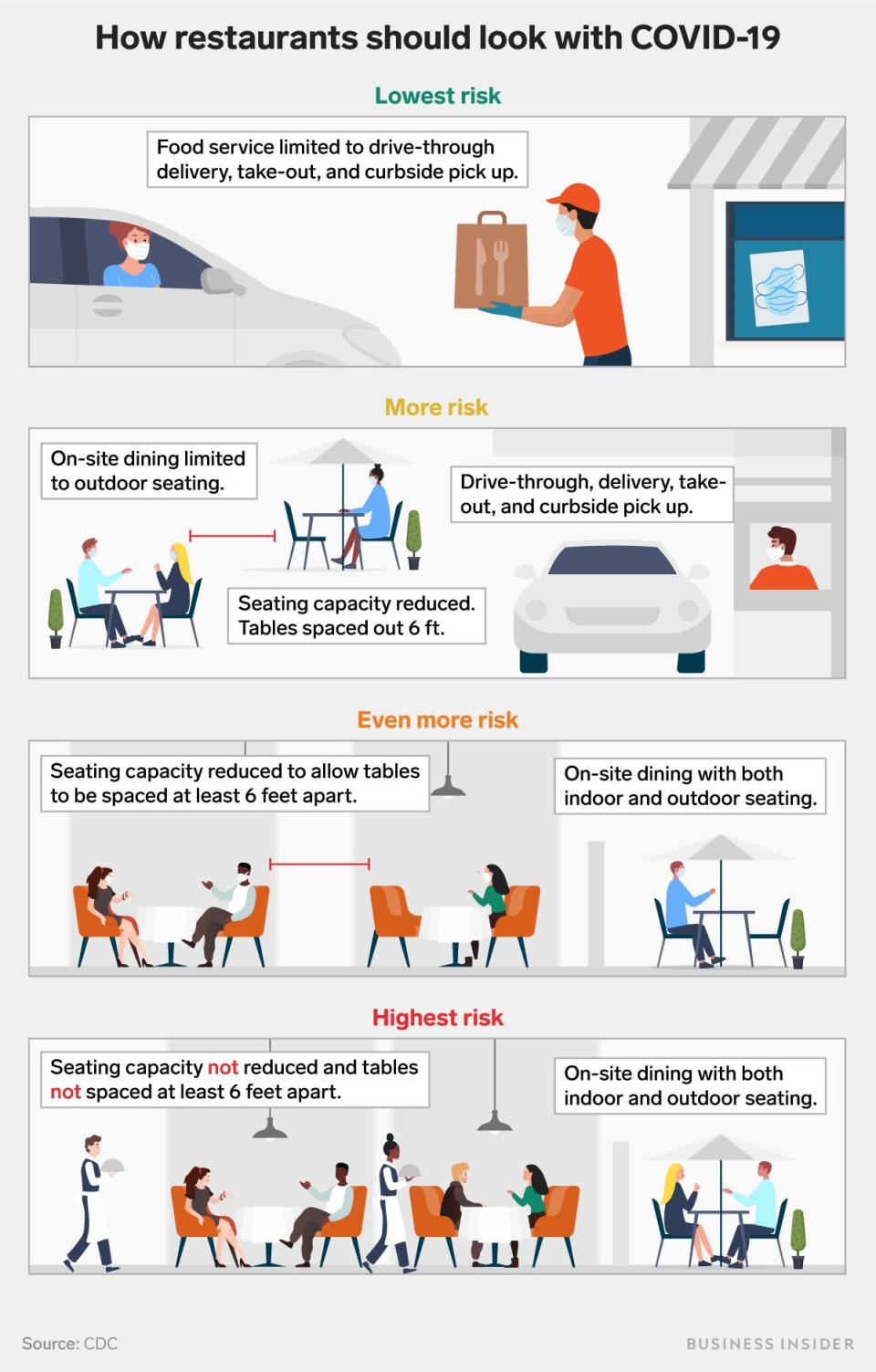The CDC broke its months-long silence to outline 3 rules 'of thumb' for staying safer from coronavirus at the gym, library, and cookouts

Associated Press
The CDC released new guidelines Friday for how to decide when to go out amidst the coronavirus pandemic.
The considerations hinge on three main factors: how close will you get to other people, how long will the interaction last, and how big will the crowd be?
The US Centers for Disease Control and Prevention broke a three-month-long silence on Friday, when the agency released some tips for how to decide when and how to venture out of your home, amid the coronavirus outbreak.
"As we reopen America, CDC, like the scientific and public health institutions around the world, continue to learn a great deal about this new virus," CDC Director Robert Redfield said, in the agency's first open teleconference with reporters since March 9. "We focus on how it's spread among people, how it's highly transmissible, and how people who are asymptomatic or pre-symptomatic can also contribute to spreading."
For those reasons, the CDC is still urging people to use caution when they leave the house, and continue social distancing, handwashing, and wearing face masks.
"We're all getting tired of staying at home," Jay Butler, the CDC's deputy director of infectious diseases said on the call.
Because the virus spreads best when people get together, Butler said any interaction with others inevitably carries "some degree of risk right now."
"Here's a general rule of thumb," he said. "The more closely you interact with others, the longer the interaction lasts, and the greater the number of people involved in the interaction, the higher the risk of COVID-19 spread."
Generally, outdoors is better than indoors, and more space is better than less.
But it's also important to consider what the specific situation is like where you live, and in your home. Several US states (including Texas, Arizona, California, and Ohio) are experiencing major spikes in coronavirus case numbers, as they continue to reopen. People who have underlying medical conditions, or live with older adults who are at higher risk of serious coronavirus complications, may also decide the risks of infection are still too great to spend time with others.
Butler outlined a few examples of what to do to reduce risk when you're ready to go out to eat, exercise, or share time with friends:
"When dining out, see if there's an option to sit outside, or ensure that tables are at least six feet apart so you can maintain social distancing," he said.

Business Insider
Here are Butler's other tips:
"If you hit the gym, don't share items that can't be cleaned or sanitized after use, and refrain from high fives and elbow bumps, which involve getting closer than six feet to others"
"If your local library is open, see if curbside pickup is available."
"If you want to gather with friends for a cookout, as much as possible, use single-serve options and remind guests to wash their hands before and after eating. Maintain social distancing, wear cloth face coverings when possible, practice hand hygiene and avoid sharing frequently touched items."
The CDC's official new guidance on how to decide when to go out goes into more detail on how to resume traveling and running errands in a low-risk way.
Overall, the agency urges people to do everything possible to keep interactions with others brief, by using systems like contactless check-ins, and ordering in advance whenever possible. The agency also encourages people to walk and bike instead of using more crowded forms of transport, where possible.
Before dining out, the CDC suggests calling the restaurant, and asking if the staff wears face masks. If you're hosting your own gathering, be outside where possible, and if not, make sure your space is well ventilated (open a window).
When exercising, the CDC suggested people "consider doing any vigorous-intensity exercise outside when possible, and stay at least 6 feet away from other participants, trainers, and clients if unable to wear a face covering."
Stay home if you are feeling sick, or think you might be coming down with a fever, dry cough, or other tell-tale symptoms of the coronavirus. This is especially important to prevent more infections from spreading to new people, as the coronavirus can be highly contagious when people are just getting sick, and may not know they are ill yet.
"The bad news today is the pandemic is not over, and it's important to recognize that," Butler said.
Read the original article on Business Insider

